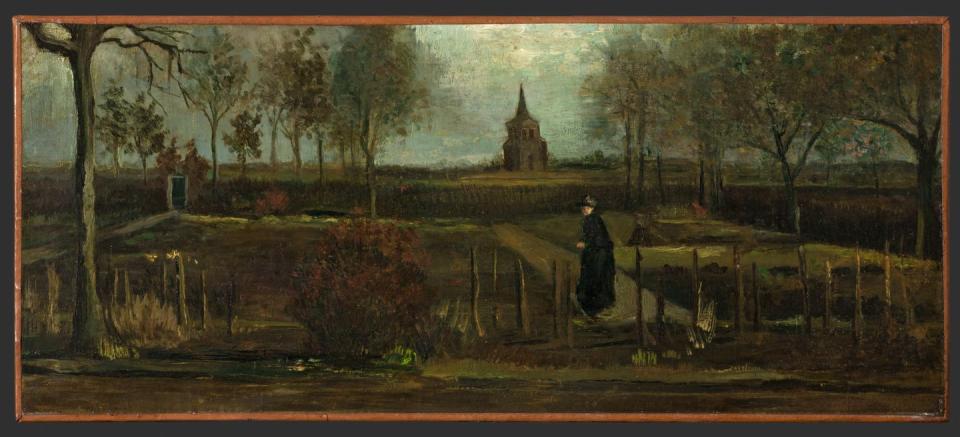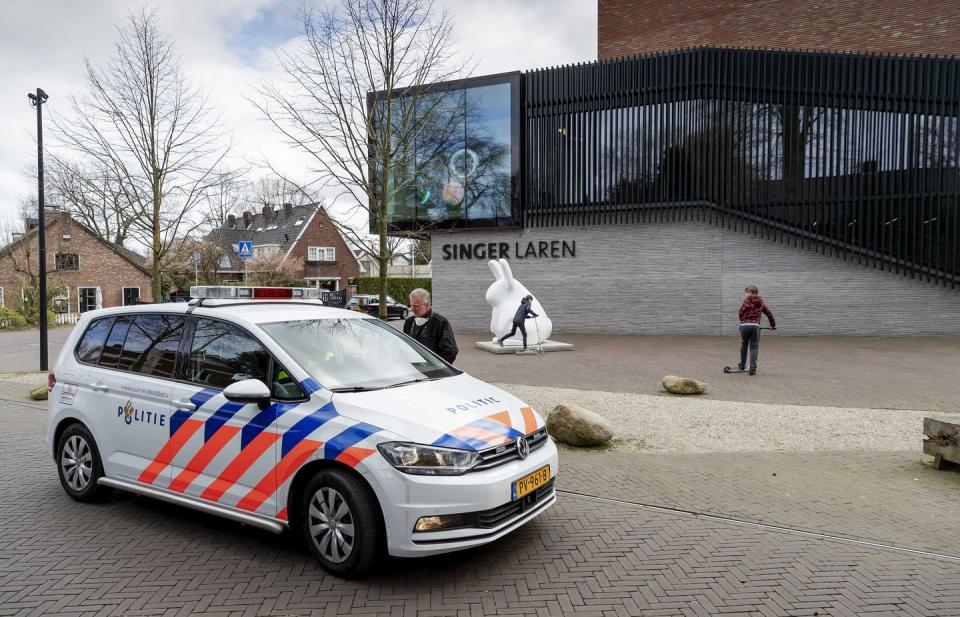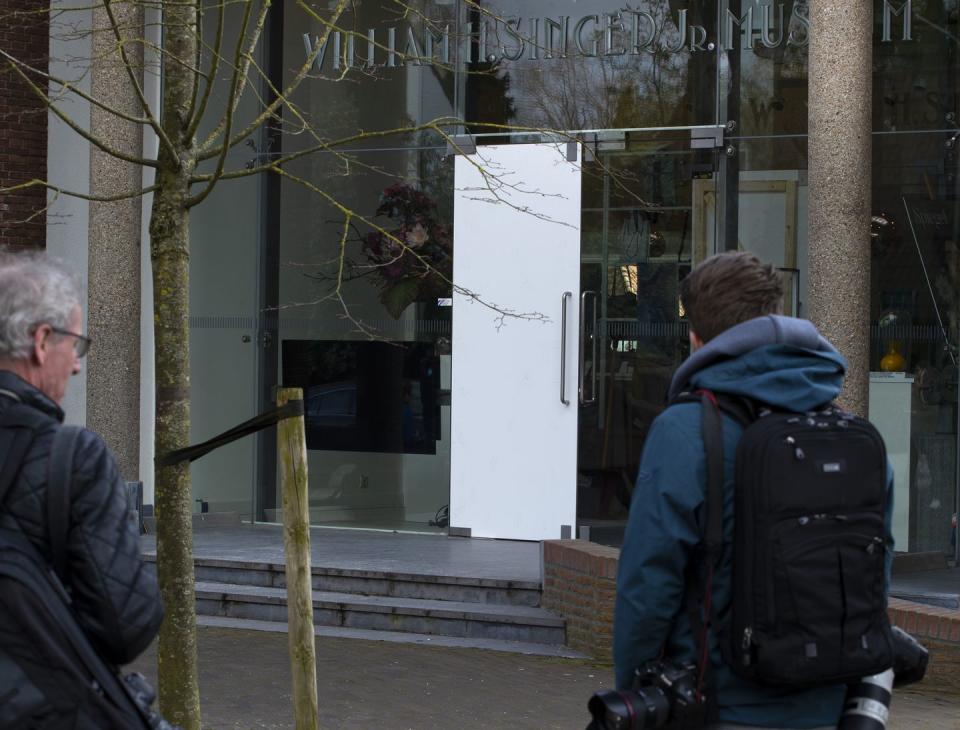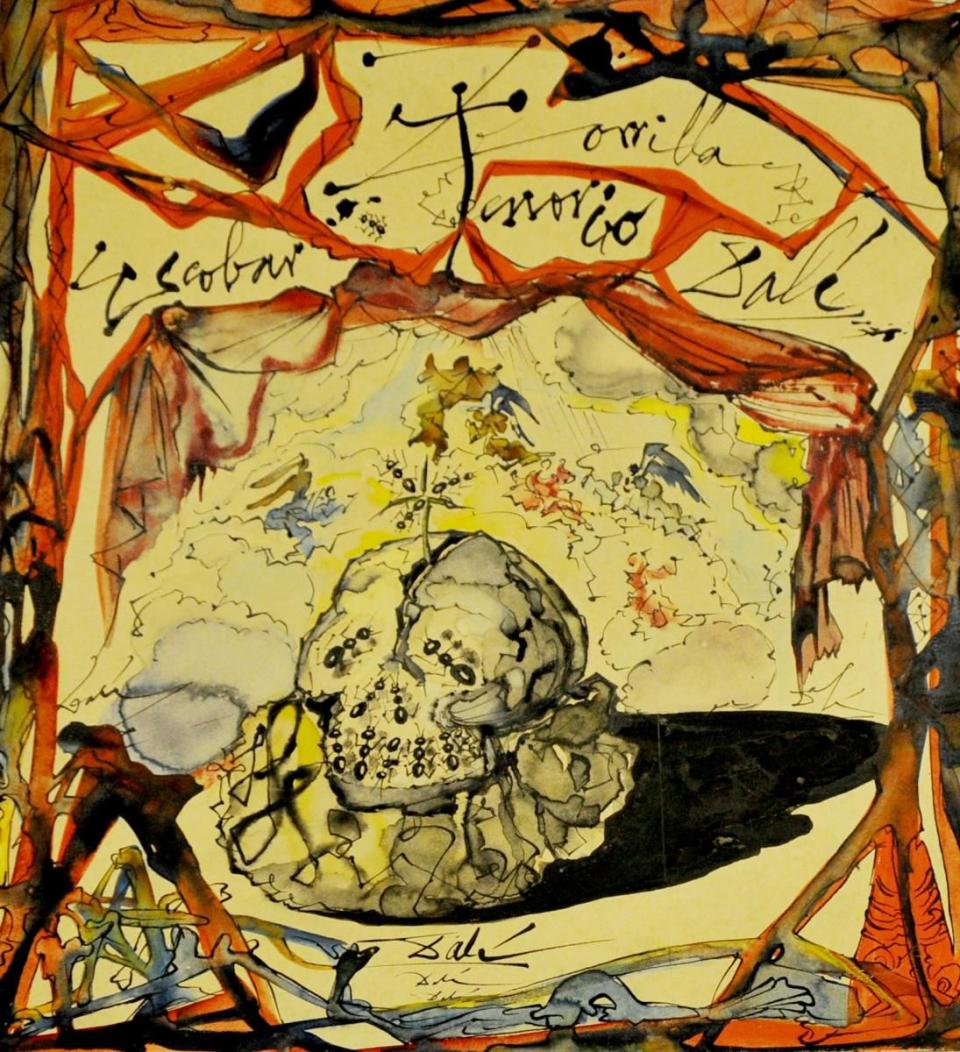Thieves Stole a Vincent Van Gogh Painting Worth Millions Last Week. This Is What Happens Next.

On March 12 the Singer Laren art museum located 18 miles south east of Amsterdam closed its doors due to the Coronavirus. Then last week, under cover of darkness, thieves broke the glass doors of the museum and absconded with an 1884 oil painting by Vincent van Gogh called The Parsonage Garden at Nuenen in Spring. The painting had never been appraised but similar works by van Gogh have fetched tens of millions at auction.
“I am shocked and unbelievably pissed off,” Singer Laren’s director, Jan Rudolph de Lorn, said in a news conference after the robbery. “Art is there to be seen and shared by all, for society as a whole, to bring enjoyment, to bring inspiration, and also to bring comfort. Especially in this difficult time.”

This wasn’t the first instance where crooks took advantage of the chaos caused by the pandemic. In early February thieves staged a smash and grab at a gallery in Stockholm, making off with a number of sculptures by Salvador Dali. In mid-March three paintings from the 16th and 17th century were stolen from Oxford college. When thefts like this happen, authorities often turn to experts like Christopher Marinello, CEO of Art Recovery International or Jordan Arnold who leads art risk advisory services at K2 Intelligence to help solve the cases. We talked to both of them to find out where the van Gogh might be, who stole it, and the identity of the shadowy figures who might try buying it.
Where Do the Thieves Go Next?
With the coronavirus effectively freezing travel and disrupting shipping routes, smuggling the painting over international borders should prove incredibly difficult. Across Europe police are pulling people over simply for going on joyrides and the two-foot-wide painting is affixed to a board making it impossible to roll up. Still, authorities are undoubtedly monitoring known routes for stolen property. “I don't want to compromise the current investigation but generally speaking, the way out of the Netherlands is usually through the criminal markets in Belgium and over to organized gangs in the Balkans,” Marinello says.
Most likely, however, the painting hasn’t left the Netherlands. “Given the COVID shutdown and the closure of borders,” Marinello says, “the thieves might not be too far from the site of the crime.”

And while there are occasional circumstances in which a robbery of a specific piece of art is commissioned, it's more likely that this painting was stolen to be flipped in the black market.
“It’s not like they’re going to have an opportunity to sell it in the legitimate art market,” Arnold says. “But there are certainly unscrupulous people out there who have collections that are for their eyes only.”
Where Do Thieves Sell the Painting?
If smugglers do manage to sneak the painting out of the Netherlands, it could literally end up anywhere on the planet. But there are a few areas in the world that, according to Marinello, “are friendlier to acquiring stolen objects.” Switzerland, France, Belgium, and Quebec all have laws that favor those in possession of property even if the path of ownership is murky.
“Some wealthy collectors exist in China and the Middle East who are ethically challenged when it comes to getting a good deal,” Marinello says. Then there’s Russia where many oligarchs have adopted a “come and take it” attitude if accused of possessing stolen property. “I have a number of cases pending with high value works looted by the Nazis being held in Russia,” Marinello says. “The holders know the works are stolen yet remain indignant and defiant.”
And while there’s virtually no meaningful data about how many people buy stolen artwork, they all seem to share a few key attributes. “It’s someone who has the cash to spend and they don’t have any qualms about possessing stolen property. They’re wealthy and lacking a moral compass,” Arnold says.

How Are Thieves Eventually Caught?
If the perpetrators are ever apprehended for stealing the painting, it may come from an elaborate undercover operation. In 2012 a man walked into the Venus Over Manhattan gallery and snatched the Cartel de Don Juan Tenorio, a small drawing by surrealist Salvador Dali, from the wall and walked out with it in a shopping bag. No one noticed. Later the painting was anonymously shipped back to the United States from Greece. Authorities — including Arnold who was working as a prosecutor for the Manhattan’s District Attorney’s office—were baffled.

Eventually a fingerprint was found on the shipping tube and traced to a fashion industry PR rep who worked in New York and Milan. (And also had a prior for shoplifting at a Whole Foods in Lower Manhattan.) “We set up a sting operation to apprehend him,” Arnold says. “We set up a fake art gallery that was about to open in New York. We hired him as a consultant. We apprehended him coming in to do the consulting gig.” Interestingly, the PR rep’s motives for stealing the painting were not for money. “After I got the confession from him I asked him why he did it,” Arnold says. “He said he looked around the gallery and realized that he could. It was a pure thrill seeking exercise.”
The chances of recovering The Parsonage Garden at Nuenen are thankfully fairly decent. In the last few decades nearly 30 van Gogh paintings were stolen in the Netherlands. All of them were eventually found. Often, the information that leads to a work of art being recovered comes from a criminal trying to gain favor with a prosecutor. “There’s very little honor among thieves,” Arnold says. “And that’s what solves this thing. Someone who has information provides it in a debriefing after they’ve been arrested in exchange for what they think will be more lenient treatment.”
Marinello is also optimistic the painting will be found. “I do believe that this van Gogh will be recovered—hopefully before the world has recovered from this pandemic.”
You Might Also Like


